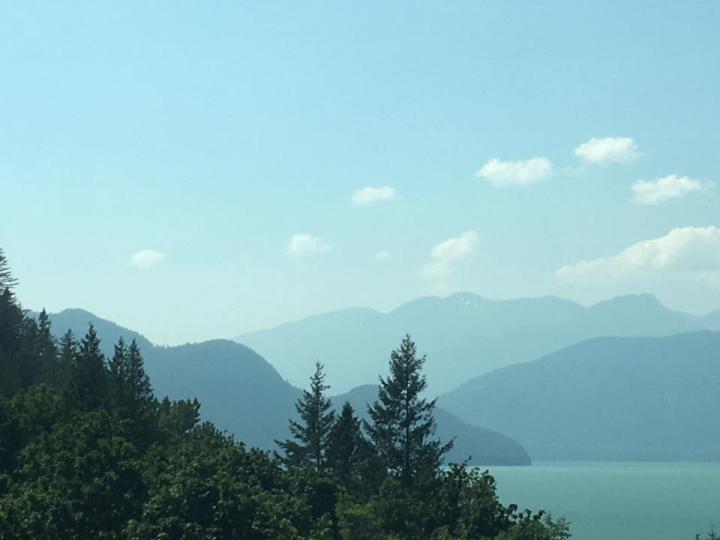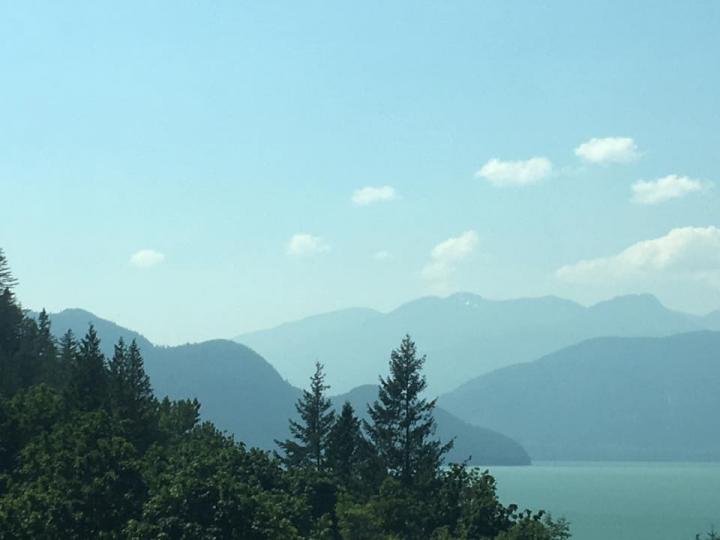
Credit: Credits: Courtesy of L. Jenner
Like tourist season, wildfire season is also in full swing in British Columbia. Whereas tourists are welcomed to the Canadian province, wildfires are not. In British Columbia alone there are close to 500 wildfires active to date. Most of these wildfires are located in three general areas–in the Caribou Fire Centre located in the Frasier Plateau directly north of Vancouver, in the Kamloops Fire Centre in the Thomas Plateau, which is east of Whistler, and the Southeast Fire Centre which is east of Kamloops. All current fires of note can be viewed on this interactive map: http://governmentofbc.maps.arcgis.com/apps/webappviewer/index.html?id=a1e7b1ecb1514974a9ca00bdbfffa3b1 Wildfires in British Columbia are common at this time of year due to rising temperatures, however, this year is the third worst year in the region for forest fires. To date 840 fires have broken out since April 1 of this year. Although it started slow, 2017 is shaping up to be a record breaking fire season if not for numbers of fires, then for the sheer amount of hectares burned. In an area where rainfall is the norm, to have days and weeks without rainfall is unusual and helps to create a hot, dry environment with plenty of underbrush that fires use as fuel.
Firefighting costs for the 426,000 hectares (1,052,668 acres) that have burned this fire season have hit $172.5 million. Close to 4,000 personnel are working these fires across the province and ground crews are supported by 200 aircraft.
Besides the actual fire, smoke becomes an issue when so many fires are in the area. An information bulletin from the BC Wildfire Service is calling for smoky skies on the coast as the wind is expected to shift and these conditions could remain for a better part of this week. It has always been known that smoke can be hazardous to your health but a new study from researchers at Georgia Tech found that particle pollution from wildfires, long known for containing soot and other fine particles known to be dangerous to human health, is much worse than previously thought. Naturally burning timber and brush from wildfires release dangerous particles into the air at a rate three times as high as levels known by the EPA. The study also found wildfires spew methanol, benzene, ozone and other noxious chemicals.
NASA's Terra satellite collected this natural-color image with the Moderate Resolution Imaging Spectroradiometer, MODIS, instrument on July 31, 2017. Actively burning areas, detected by MODIS's thermal bands, are outlined in red. NASA image courtesy Jeff Schmaltz LANCE/EOSDIS MODIS Rapid Response Team, GSFC. Caption by Lynn Jenner with information from the BC Wildfire Service, and the Georgia Tech study.
###
Media Contact
Lynn Jenner
[email protected]
@NASAGoddard
http://www.nasa.gov/goddard
Original Source
https://www.nasa.gov/image-feature/goddard/2017/wildfires-continue-to-beleaguer-western-canada





